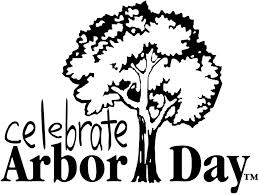If you are interested in pruning your own trees or ornamental shrubs, here are some guidelines.
Why Prune
The selective removal of plant parts
- Remove dead, diseased, broken branches
- Maintain/reduce size of tree or shrub
- Stimulate future flower/fruit development
- Rejuvenate old shrubs
- Prevent damage to life and property
- Shape plants in an unnatural form (topiary
When to Prune
Remember, pruning is good because it stimulates growth, but it also is wounding. Trees do not heal, they compartmentalize. Most rapid response to wounding occurs late winter – early spring. That is when you want and will get the most growth response.
When to prune is based on the flowering and fruiting habit of the plant
- Flower before the end of June
- Immediately after flowering
- Forsythia, rhododendron
- Flower after the end of June
- Before new growth starts, late winter or early spring
- Butterfly bush (Buddleia)
- G. Hydrangea
- Certain plants may be lightly pruned both before and after flowering
- Red Osier dogwood, Cranberry cotoneaster, Rose Weigela
Evergreens, broadleaf and narrowleaf, may be pruned anytime the wood is not frozen. Do not cut beyond living portion of branch.
Excellent source for pruning fruit trees https://ecommons.cornell.edu/handle/1813/67
For all varieties, avoid late summer pruning in August through mid-September. Pruning at this time of year encourages new growth to develop which will not harden sufficiently for the winter, thereby increasing the danger of winter damage.
How to Prune
Tools
- Hand Pruners (bypass not anvil) – branches up to 3/4”
- Loppers – branches less than 1 ¾ “
- Pole Pruners/saws – branches up to 2”
- Hand Saws – branches up to 4”
Deciduous shrubs and trees
- Allow plants to develop a natural shape.
- “Haircut” pruning should be avoided.
- Use a thinning technique:
- Cut branches at different lengths, ¼ inch above active bud – prevents dieback of the stem and a new branch develops from the bud;
- Remove twigs and branches selectively and reduce overcrowding;
- Remove some stems at ground level;
- Length of new shoots should be reduced to 1/3 or 1/2 their length inducing side shoots to develop;
- Always remove dead, damaged, or diseased branches.
- Remove dead flower branches, dead flowers and old fruit stocks as soon as wilted or dropped. This stimulates new growth and encourages plants to produce more flower buds next season.
Evergreens
- Avoid shearing to artificial shapes.
- Prune using thinning technique.
- Do not cut branches back to old wood; the non-green portion of an evergreen branch does not normally put out new branches.
- If removing large branches, cut close to main trunk leaving no stubs.
- To thicken new growth, remove ½ of candle when is it approximately 2 inches long in spring; pinch it out.
- Do not top or remove central leader.
Rejuvenation of Declining Shrubs
- Remove 1/3 of old mature stems per season at ground level.
- Leave young vigorous branches.
- Cut back water sprouts that develop to different lengths and encourage to develop by thinning process.
- Some plants may be completely cut back to the ground if necessary.
Cornell pruning reference: https://ecommons.cornell.edu

